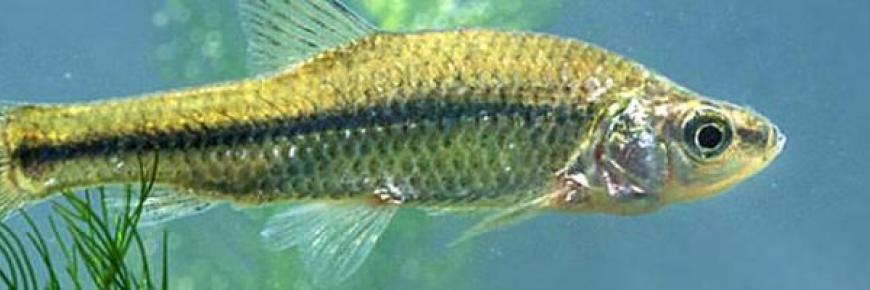American mink
American mink ©Paul Gambling
American mink (Neovision vison) were originally introduced for fur farming in the 1920’s and have since established in the wild due to escapes and deliberate introductions. Their first recorded breeding in the wild was in the 1950’s. Roughly the size of a ferret these animals can reach up to 60cm in length and weigh between 1-2kg, females are smaller than males. They most commonly have dark brown or black fur with a white patch under the chin, however colours do vary. These animals are found in wetland environments such as rivers and lakes where they are territorial ranging up to 5km along a river however they are known to travel large distances (sometimes over 80km) in search of good quality habitat and mates.
American mink are voracious predators and can have a devastating effect on native wildlife, adapting feeding habits depending on availability of their prey. The invasive American mink has caused over 90% decline in native water vole populations since their introduction. They are also known to predate upon species such as ground nesting birds like kingfishers and poultry, fish and eels which can also be valued by anglers and fisheries.
Native to: North America
Habitat: Aquatic habitats, mainly rivers and lakes but can be found in coastal areas
I’ve found American mink on my land. What should I do?

American mink ©Snowdonia National park Authority
Within Norfolk there is a dedicated group tasked with the control and eradication of American Mink – The Norfolk Mink Project. This project was established in 2003 to help stop the decline in water vole populations in Norfolk and relies on a strong community effort from volunteers dedicated to monitoring and trapping mink.
American mink is listed under Schedule 9 to the Wildlife and Countryside Act 1981. It is an offence to release or allow the escape of this species into the wild. If these animals are spotted, the first thing to do would be to report it to the Norfolk Mink Project (details below). To determine the presence of mink, these animals are monitored using a mink raft which floats on a river and houses a tunnel and a clay tracking pad. The raft is monitored regularly to look for mink paw prints in the clay. When mink are spotted the tunnel can be swapped for a trap. These raft are monitored by volunteers. If you would like to know more or participate in your area please get in contact with the Norfolk Mink Project or contact the NNNSI coordinator (details below).
-
Visit the Norfolk Mink Project website (opens an external webpage)
-
For more information download the GBNNSS American mink management information document
I want to report an American mink sighting
The Norfolk Mink Project has its own dedicated website for more information and reporting American Mink sightings. These animals can cover vast distances daily so it is important to report a sighting as soon as possible.
-
For more information email: NNNSI@norfolk.gov.uk

